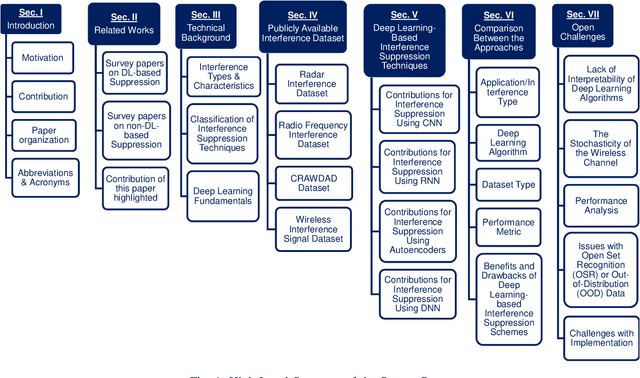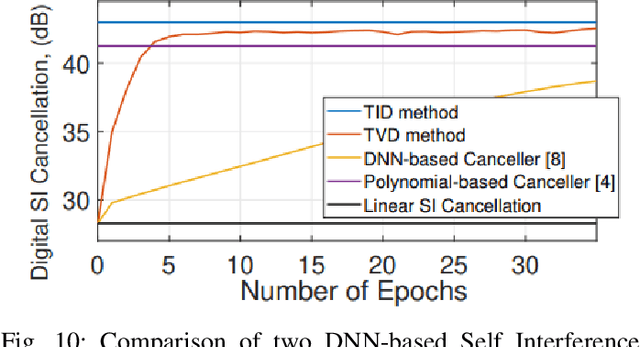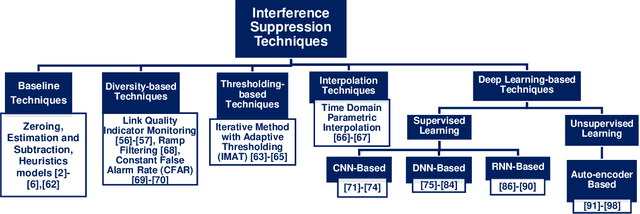Jeff H Reed
Interference Suppression Using Deep Learning: Current Approaches and Open Challenges
Dec 16, 2021



Abstract:In light of the finite nature of the wireless spectrum and the increasing demand for spectrum use arising from recent technological breakthroughs in wireless communication, the problem of interference continues to persist. Despite recent advancements in resolving interference issues, interference still presents a difficult challenge to effective usage of the spectrum. This is partly due to the rise in the use of license-free and managed shared bands for Wi-Fi, long term evolution (LTE) unlicensed (LTE-U), LTE licensed assisted access (LAA), 5G NR, and other opportunistic spectrum access solutions. As a result of this, the need for efficient spectrum usage schemes that are robust against interference has never been more important. In the past, most solutions to interference have addressed the problem by using avoidance techniques as well as non-AI mitigation approaches (for example, adaptive filters). The key downside to non-AI techniques is the need for domain expertise in the extraction or exploitation of signal features such as cyclostationarity, bandwidth and modulation of the interfering signals. More recently, researchers have successfully explored AI/ML enabled physical (PHY) layer techniques, especially deep learning which reduces or compensates for the interfering signal instead of simply avoiding it. The underlying idea of ML based approaches is to learn the interference or the interference characteristics from the data, thereby sidelining the need for domain expertise in suppressing the interference. In this paper, we review a wide range of techniques that have used deep learning to suppress interference. We provide comparison and guidelines for many different types of deep learning techniques in interference suppression. In addition, we highlight challenges and potential future research directions for the successful adoption of deep learning in interference suppression.
 Add to Chrome
Add to Chrome Add to Firefox
Add to Firefox Add to Edge
Add to Edge